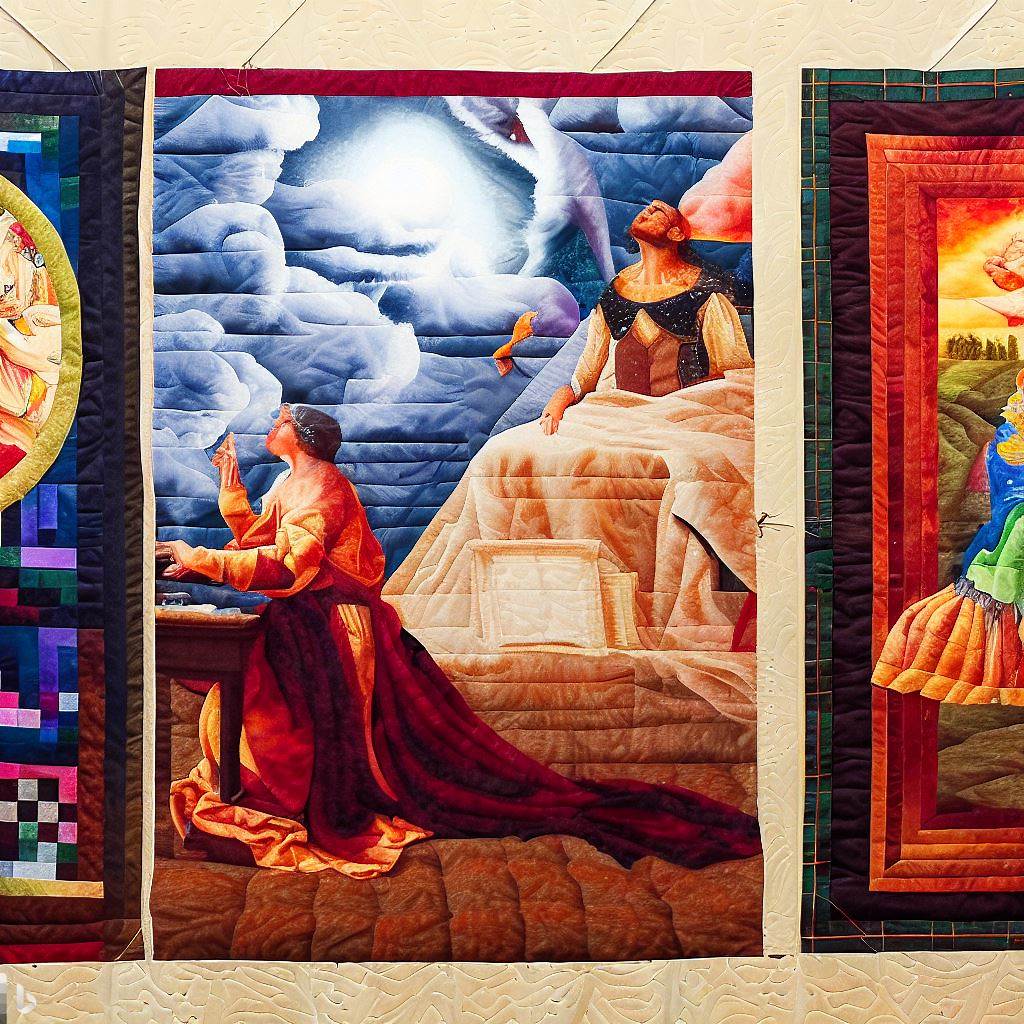Quilting with a Purpose: Art as a Vehicle for Social Change
For many artists, creativity represents not only personal expression but also a means to spotlight injustice and catalyze positive social transformation. Quilts contain a unique power to tell stories, convey outrage, and mobilize hope due to their narrative potential and roots in community activism. From abolitionism to women’s rights, quilts loudly speak truth to power. Today’s purpose-driven quilters follow this legacy using stitches as tools for consciousness-raising, memorial, and healing. Their work demonstrates quilting as a potent vehicle for social change.
The Tradition of Subversive and Activist Quilts
Throughout history, marginalized communities stealthily embedded subversive political messages within quilts to organize and resist oppression. Their courageous efforts paved the way.
Coded Abolitionist Quilts
Enslaved people used quilts to communicate plans for escape by encoding maps and messages. Colors and symbols transmitted vital information right under the noses of enslavers. This “freedom quilting” fueled resistance.
Native American Narrative Art
Native quilters illustrated cultural stories and traditions suppressed by colonizers. These pictorial quilts asserted tribal heritage. Their art passed on ancestral knowledge.
Suffrage Quilts Rallying for Rights
To advocate for women’s rights, suffrage quilts from the 1860-1920s featured empowering messages. Women publicly displayed these quilts as pro-voting arguments against patriarchal denial.
AIDS Memorial Quilts Mourning Lives Lost
The AIDS crisis of the 1980s inspired the Names Project AIDS Memorial Quilt. Mourners submitted panels commemorating thousands of lost loved ones to raise awareness during government inaction.
Gee’s Bend Quilts Voicing Black Experience
Created by an isolated African American community in Alabama, Gee’s Bend quilts became famous for their improvised geometric designs and symbolic use of color and pattern. The quilts express steadfast Southern black heritage.
Contemporary Change-Makers: Quilting with Purpose
Today’s art quilters determinedly use their work to increase understanding, expose injustice, memorialize marginalized groups, and envision a more just world.
Environmental Crisis Quilts
As climate change threatens human and ecological welfare, quilters are responding with pieces depicting environmental decline through images of flooding, wildfires, and species extinction. Their jarring work sounds the alarm.
Exploring Identity Through Quilts
Quilts that probe topics like LGBTQ+ identity, disability, or mental health open minds and forge human connections. For example, identity quilts may feature personal symbols or layered metaphorical textures.
Exposing Racial Violence and Inequity
Quilt artists powerfully spotlight ongoing racial injustice in America by referencing police brutality, mass incarceration, and persistent inequities. Bold colors and symbols convey simmering tensions.
Envisioning More Just Futures
Some conceptual quilters take an imaginative stance picturing idealized environments absent of oppression, marginalization, and scarcity. Their utopian pieces kindle hope and possibility.
Honoring and Memorializing Victims
Quilt tributes honor specific groups like murdered indigenous women, lynched African Americans, or lost homeless community members. These memorial quilts respectfully preserve victims’ memories and dignity.
Strategies for Sparking Change Through Quilts
Purpose-driven quilters make creative choices regarding subject matter, techniques, and public display to maximize their art’s impact as a change agent.
Symbolic Patterns and Motifs
Selecting particular textile patterns, motifs, materials, and color combinations allows quilters to embed symbolic layers of meaning. A white background might represent innocence while black borders could signify mourning.
Minimal Text for Accessibility
Most social justice quilts limit text to centralize visual potency. Simple phrases or titles get the point across. This facilitates universally accessible communication unbound by language.
Making Issues Human and Visceral
Quilters working to expose injustices often incorporate figurative elements, portraits, or even blood-colored staining to humanize statistical issues and spark feeling. Visceral subjects inspire empathy.
Designing for High-Impact Display
Large scale art quilts, graphic colors, and visual rhythm command attention when exhibited publicly. Their assertive design choices make issues vivid and unavoidable when installed in protest spaces or museums.
Sharing Stories and Foster Dialogue
Quilters display work to spur storytelling and spark debate on difficult issues. Their creative action models using art to courageously engage conflict for positive change.
The Persistence of Purpose
Across centuries, those denied power have stitched, patched, and quilted counter-narratives of identity, truth, resistance, and justice. Their threads wove solidarity and perseverance. Today, purpose remains quilting’s steady pulse. Through fabric tension emerges change. Where they are layered, remnants give voice. From past hands to present hearts, quilting remembers its conscience – each stitch a call to meet suffering with both beauty and intention until all can rest easy under covers of equity and care.
